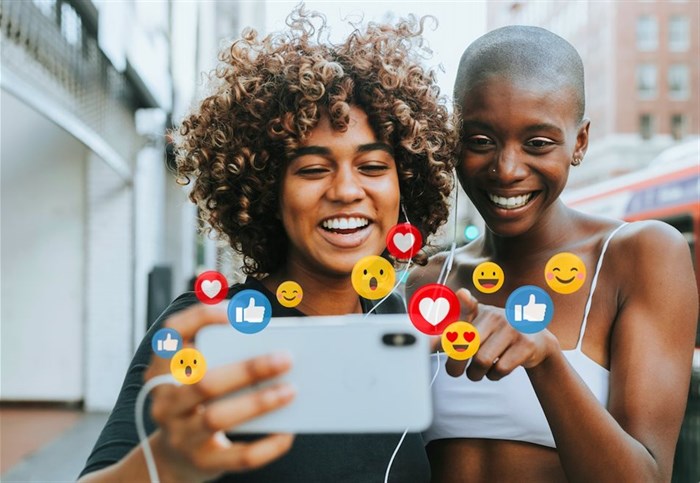Influencer marketing continues to grow as more and more brands turn to influencers - big and small - to help them win over new customers and retain existing ones. Nicola Ashe, director and partner at award-winning agency, The Digital Media Collective (TDMC) shares her expert insights on everything influencers need to know to grow their profiles and woo brands.
For many businesses, influencer marketing forms a key part of their marketing strategy – it’s a powerful way for them to differentiate themselves from their competitors, particularly in the face of the current economic downturn which sees brands fiercely competing for consumer spend. By partnering with the right influencers, brands can stand out in the minds of consumers and connect with their target market in an authentic way. According to the Influencer Marketing Hub’s State of Influencer Marketing Benchmark Report, influencer marketing had an estimated market size of $16.4bn last year and is expected to reach $21.1bn in 2023 – that’s a 29% jump.
At the same time there has been a massive spike in e-commerce in South Africa with data from the FNB Merchant Services showing that the South African online e-commerce market is expected to jump from R200bn per annum to more than R400bn by 2025 off the back of more than 1 billion transactions per annum. “There has been a marked shift in the role of influencers in marketing in South Africa, particularly in the e-commerce space, as companies recognise the value of peer-to-peer communication,” says Ashe, whose award-winning agency is one of South Africa’s leading e-commerce development agencies. TDMC is one of only four accredited Shopify Expert Partners in Southern Africa, as well as a Google Expert Partner and Meta Business Partner, and has launched more than 200 e-commerce stores in the last five years. Here Nicola outlines how aspiring social media content creators can get a piece of the influencer pie.
1. Create your own personal brand
Breaking into the influencer market requires building a strong personal brand and establishing a loyal following on one or more social media platforms. “While it may seem challenging if you haven’t started yet, it's never too late to begin,” says Ashe. “Start by identifying your niche, then get to creating and posting quality content regularly, engaging with the audience you build, collaborating with other influencers, and staying authentic – this way you create your own personal ‘brand’.” It takes time and effort, but with persistence and consistency, you can succeed.
2. Post content that is relevant, sincere – and helpful
Compelling content is key to your success, says Ashe. It needs to be authentic, relevant, and tell a story that viewers resonate with. “In 2023 we are seeing that video content, short-form content and user generated content is popular, as well as content which incorporates trends into its messaging. Additionally, content that provides value – such as educational or informative content – is compelling to an audience, especially if it’s tailored to their interests and needs.”
3. Master video and these key trends
Social media trends are ever-changing and are influenced by both user behaviour and platform algorithms. To maximise reach and engagement, it is important to stay ahead of the trends, and right now that means short-form video content, interactive content, and real-time ephemeral content.
“Short-form video content like you find on TikTok and Instagram Reels has exploded in popularity in recent years, largely due to its ability to capture and hold users’ attention quickly,” says Ashe. “Similarly interactive content such as quizzes, polls and surveys has also grown in popularity. These boost engagement and provide a unique and personalised experience for the audience while enabling your partner brand to gather valuable data and insights.”
Ashe says real-time content that disappears after a set amount of time, such as Instagram and Facebook Stories is also proving popular with audiences. “This type of ephemeral content is most suited to a live event, special occasion, or campaign content. Because it is only available for a limited amount of time it creates a sense of urgency and FOMO for the audience, encouraging them to look out for the content and to engage and interact then and there.”
4. Prepare a media kit and polish up your branch reach outs
Building relationships with brands or their agencies takes time and effort, but a personalised and professional approach goes a long way to establish a positive and mutually beneficial partnership. When it comes to reaching out, Ashe shares some important dos and don’ts:
Do:
- Research the brand and make sure your message is tailored to them.
- Clearly state your value proposition and what you can offer the brand.
- Be professional and courteous in your approach, keeping in mind that first impressions are important.
- Follow up in a week or two if you don't hear back, but don't be pushy or aggressive.
- Give examples of your work and include a media kit and rate card with links to all your social feeds.
Don't:
- Don’t send a generic message to multiple brands.
- Don’t make demands or appear entitled, instead focus on how you can provide value.
- Don’t spam the brand with multiple messages or follow ups.
- Don’t be dishonest about your intentions or experience.
- Don’t exaggerate or misrepresent your reach or engagement rate.
5. Use analytics to your advantage
“Set time aside to come to grips with social media analytics and leverage these insights to understand exactly what types of content resonate with your audience,” says Ashe. Authentic engagement (comments, shares, saves) is the most important stat brands are looking at, so try to spotlight what content gains you the most engagement with your audience.
6. Don’t be tempted to buy followers
“While brands and agencies can’t actually access your social media accounts, we have various tools – and manual checks – which we can use to tell if you have bought your followers,” warns Ashe. Red flags include a sudden large increase in followers without a corresponding increase in engagement, and a high ratio of followers to following – meaning the account follows very few users relative to the number of followers. “A low quality of followers, such as profiles with no profile pictures or posts, inactive accounts, or bot accounts also sets off alarm bells, as does a sudden drop in followers, which can happen when social media platforms remove fake or inactive accounts,” says Ashe.



































